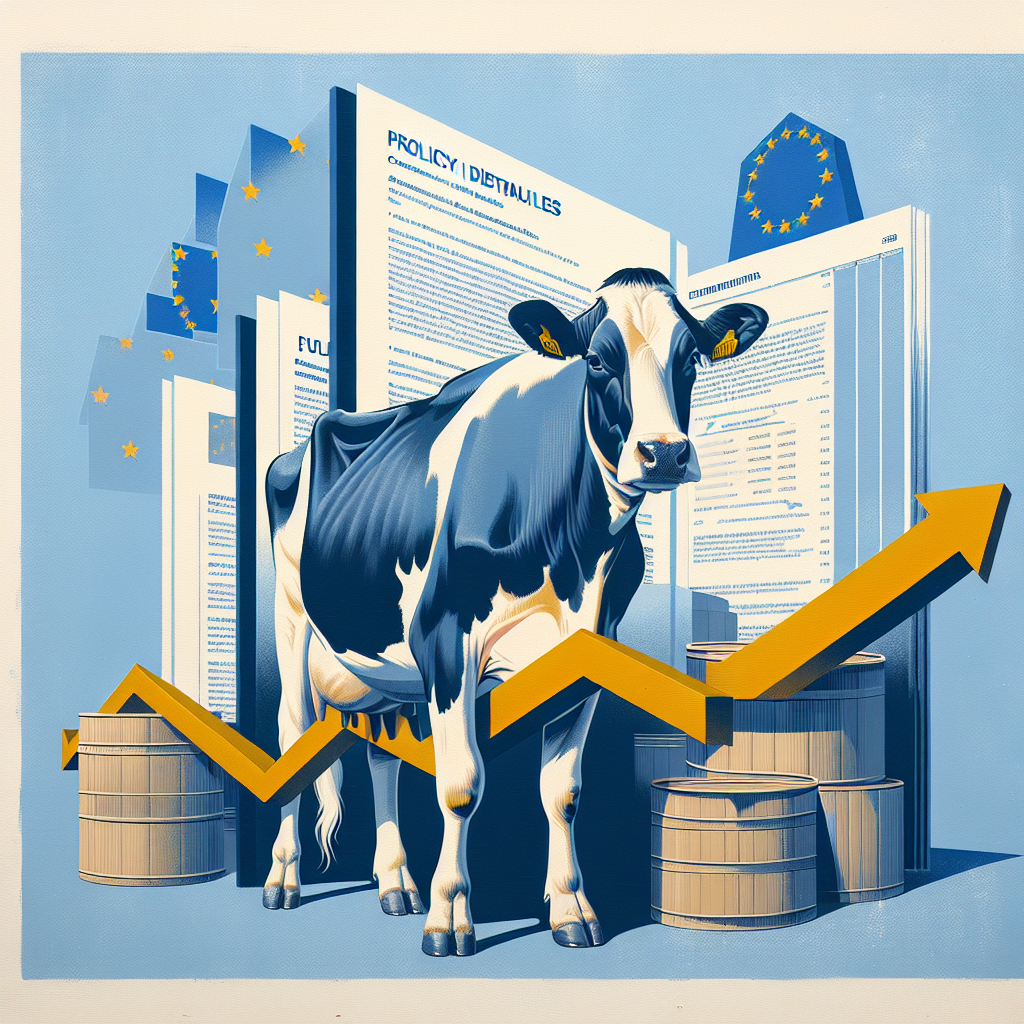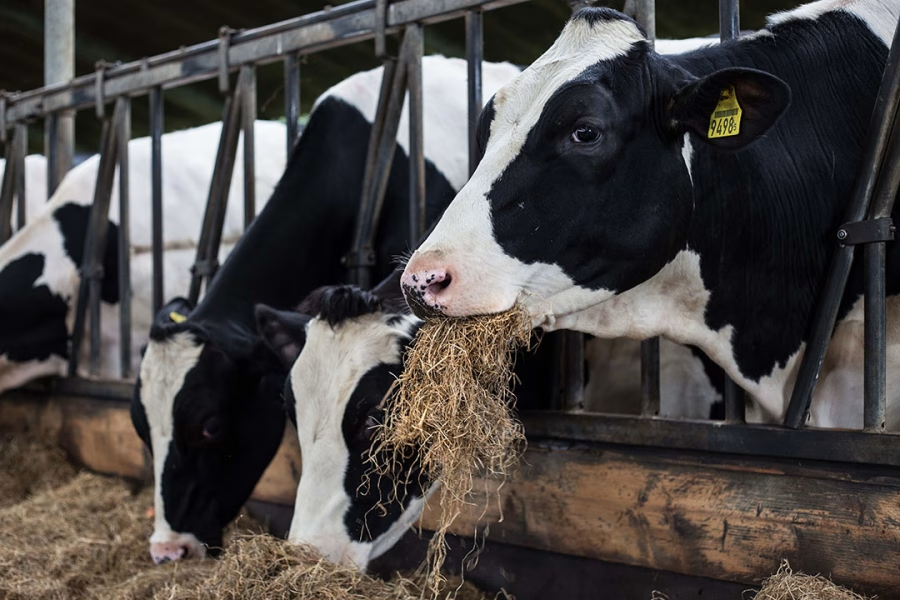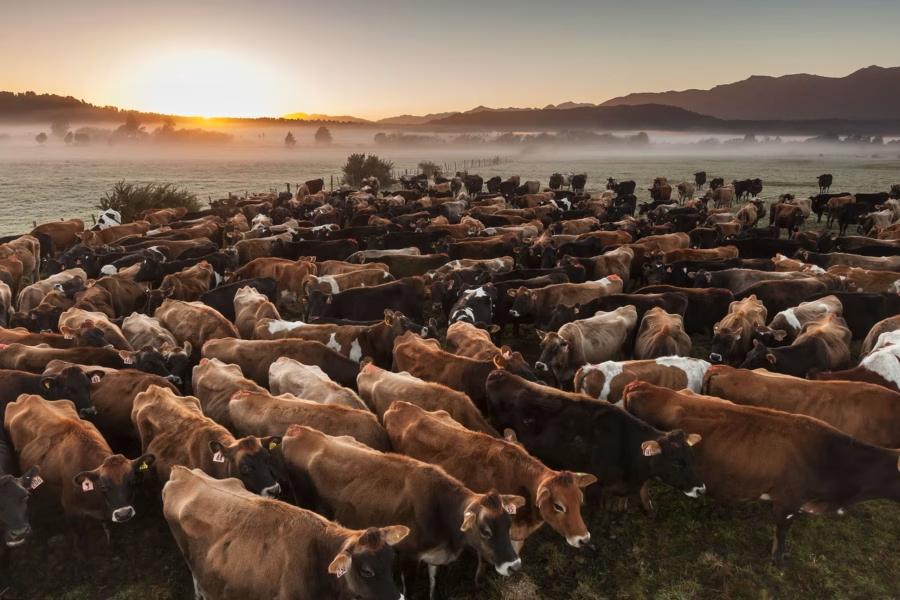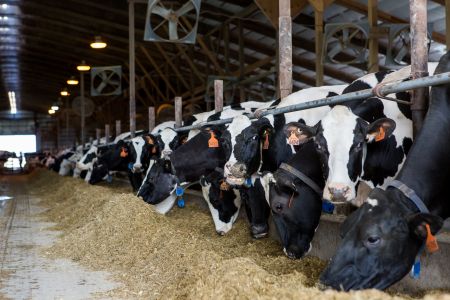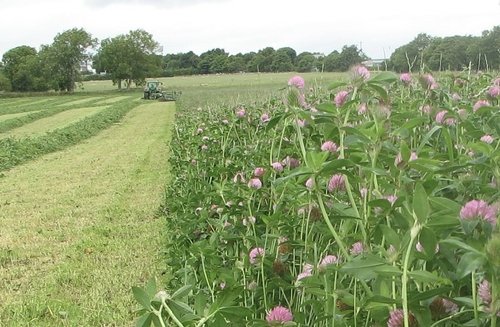Has the beef-on-dairy trend run its course? Industry changes may be the harbinger of what’s to come for dairy farmers. How prepared are you for these shifts?
Summary:
In recent years, the fusion of dairy and beef industries, known as the beef-on-dairy trend, has garnered attention from agricultural professionals and dairy farmers. Initially, a strategic financial move, it has become an industry cornerstone, adapting to changing demands. However, speculation about its peak raises questions about its decline. This approach, a response to fluctuating markets, has diversified dairy producers’ income streams. Yet, as of late 2024, the beef and dairy markets present challenges, with fluctuating prices and rising costs impacting profitability. The industry faces increased production costs and labor shortages, prompting exploration of alternative strategies. The sustainability of beef-on-dairy operations hinges on prudence and adaptability amidst these dynamics. Is this trend just a flash in the pan, or does it have sustainable longevity?
Key Takeaways:
- The peak of the beef-on-dairy trend may have been reached, indicating potential changes in both beef and dairy markets.
- Increasing production costs could challenge the viability of beef-on-dairy operations for some farmers.
- There may be opportunities to diversify and innovate within the beef-on-dairy sector despite challenges.
- Monitoring market developments and trends is crucial for dairy producers to adapt effectively.
- Republican viewpoints suggest a focus on economic efficiency and market resilience in future strategies.
- Industry experts provide insights into potential shifts and strategic considerations for sustaining profitability.

Is the beef-on-dairy boom beginning to fade? This innovative crossbreeding trend has reshaped milk and beef production in recent years. It’s sparked a lively debate among farmers about its long-term impact. By merging strengths from both sectors, dairy producers have expanded into beef, creating significant benefits for both markets. Yet, we might have seen the peak of this trend and could be on the verge of a shift in market dynamics, potentially indicating a strategic re-evaluation. Let’s delve deeper and explore what implications this holds for the future of our sectors.
A Bold Blend: Navigating Market Waves with Beef-on-Dairy Innovations
Over the past decade, the beef-on-dairy trend has emerged as an innovative response to fluctuating markets. Traditionally focused on milk supply, dairy producers have strategically integrated beef production operations to diversify revenue streams. This shift positions them as significant beef suppliers, leveraging the dual utility of their herds.
The primary driver of this trend is economic viability. Dairy farmers , with their resilience and adaptability, mitigate financial risks by tapping into beef markets when milk profits wane. Rising feed, labor, and operations costs force farmers to seek alternative income avenues. Crossing dairy cows with beef bulls results in offspring that yield more lucrative beef cuts, creating a profitable byproduct from the dairy enterprise.
Furthermore, evolving consumer preferences contribute to this shift. With heightened demand for high-quality beef, dairy farms capitalize by adjusting breeding programs to optimize beef attributes. This model is no longer just a trend; it reflects adaptability in an ever-changing agricultural landscape.
The Evolution of Beef-On-Dairy: From a Financial Strategy to Industry Staple
The beef-on-dairy trend has been a fascinating evolution within the agricultural sector. Historically, integrating beef cattle genetics into dairy herds wasn’t a novel concept, but it gained significant traction around the mid-2010s. This trend, driven by economic efficiencies and market demands, is a testament to the industry’s strategic thinking and adaptability. As dairy farmers began grappling with volatile milk prices and increasing operational costs, diversifying income through beef production emerged as a pragmatic solution. It wasn’t long before this strategy evolved from a mere contingency plan into a mainstay component of dairy farm operations.
Several factors contributed to the rise of this trend. For one, advances in breeding technologies allowed for more strategic crossbreeding, leading to calves that were not only profitable but also met market specifications for beef quality. Additionally, beef cattle genetics introduced into dairy breeds enhanced feed efficiency and carcass weights, making the beef output from these operations quite competitive against traditional beef operations. Another driver was the fluctuating beef market, which occasionally presented more lucrative opportunities than the persistent challenges of milk production. By 2022, it was reported that beef produced from dairy-origin cattle accounted for approximately 10.9% of the U.S. beef supply, a testament to its growing significance in the industry.
Moreover, the global market’s appetite for high-quality beef, combined with consumer preferences for genetic transparency and sustainability, played into the trend’s hands, as beef-on-dairy presented a narrative of efficiency and enhanced resource use. At the same time, it seemed like a match made in cattle heaven, driven not just by market conditions but underpinned by scientific and technological advances; understanding this historical trajectory is crucial for unpacking the present dynamics that suggest a plateau or possible decline in interest. As we dissect these elements, it poses the question: Are we indeed witnessing the end of beef-on-dairy’s golden age, or is it simply entering a new phase?
Are Beef-On-Dairy’s Glory Days Behind Us?
As of late 2024, the beef and dairy markets demonstrate intriguing dynamics that could signal a change in the ongoing beef-on-dairy trend. The beef market has experienced considerable fluctuations, with prices increasing slightly in mid-2023, driven by heightened demand and global supply challenges. However, recent reports suggest a stabilization, with signs of a potential downturn as consumer behaviors adjust post-pandemic. This stabilization could have significant implications for the beef-on-dairy trend, potentially leading to a decrease in the profitability of beef production from dairy-origin cattle. Indeed, data from the USDA highlights a 3% increase in beef production that might outpace consumption rates in coming quarters, pressuring prices downward [USDA Beef 2024 Outlook].
Simultaneously, the dairy sector is navigating its challenges and opportunities. The dairy market is observing a notable uptick in production costs, primarily driven by rising feed prices and labor shortages. These factors are compressing margins and causing dairy operators to reassess their beef-on-dairy strategies. The cyclical nature of dairy’s supply-demand equilibrium can often lead to abrupt shifts, as witnessed in past cycles. This cyclical nature could potentially lead to a decrease in the profitability of beef production from dairy-origin cattle, as dairy farmers may shift their focus back to milk production during periods of high demand. For instance, the 2016 dairy glut remains a fresh memory, reminding producers of the potential volatility [Dairy Industry Margin Pressures 2024].
One must recognize the broader economic indicators influencing these sectors. Persistent inflationary pressures are causing shifts in consumer spending patterns, often opting for more economically viable dairy alternatives and budget-conscious beef cuts. This could also imply an impending recalibration in production focus, potentially incentivizing a divergence away from the beef-on-dairy model in favor of more traditional operational paradigms.
The intersections between cyclical trends in beef and dairy markets have profound implications for farm operators and agro-commodity strategists alike. As producers continue to explore innovative approaches within the beef-on-dairy framework, the emerging economic signals suggest that prudence and adaptability will be critical. This potential for future innovation and adaptability should inspire hope for the industry’s continued evolution. Are we witnessing the beginning of the end for beef-on-dairy dominance or merely a period of recalibration?
The Economic Ballet: Navigating Costs and Demands in the Beef and Dairy Markets
The interplay of economic factors that influence the beef and dairy markets is a complex dance of cost, demand, and market trends. For starters, beef prices have experienced fluctuations that might have dairy producers rethinking their strategies. According to recent statistics, the beef market has experienced a steep climb, with prices rising by around 8.5% since July 2023. This increase can be tied to various factors, including feed costs and the cost of maintaining livestock (Agriculture.com).
Production costs have also been rising on the dairy side. According to a recent analysis, feed prices surged by approximately 10.9% in 2022, a direct consequence of global supply chain disruptions and inflationary pressures. These increased costs inevitably squeeze profit margins for dairy producers who rely on beef as a supplemental revenue source (Dairy Herd Report).
Consumer demand further complicates the picture. Both beef and dairy markets have seen shifts in consumer preferences, with a noticeable uptick in demand for alternative proteins and plant-based dairy options. This shift reflects broader dietary trends, with consumers becoming more health-conscious and environmentally aware. This shift in consumer preferences could potentially reduce the demand for beef and dairy products, impacting the profitability of beef production from dairy-origin cattle. This could lead to a decrease in the profitability of beef production from dairy-origin cattle, as dairy farmers may need to adjust their production to meet changing consumer demands (Consumer Reports).
Economic indicators show the challenges facing the beef-on-dairy trend, and these dynamics signal that its popularity has begun to wane. With rising costs and changing consumer demands, dairy producers must weigh the benefits against the rising risks. As a Republican voice in the industry might suggest, it’s a matter of adapting to the market or watching profits evaporate—an enviable position for some but a reality check for many of our nation’s dairy entrepreneurs.
Challenges and Opportunities in Beef-On-Dairy Operations
While the beef-on-dairy model is innovative, it presents dairy farmers with various challenges. Key among these is the increased complexity of herd management. Dairy farmers who are well-versed in milk production may find the shift to beef production—which requires different expertise and resources—daunting. There’s also the question of feed costs, which can rise as farmers adjust their feed formulas to suit beef cattle needs.
Labor is another concern. As beef-on-dairy operations expand, so do labor requirements. This could mean increased personnel costs, which may impact overall profitability. Moreover, market volatility is always a looming challenge. Dairy farmers venturing into beef markets must navigate fluctuating beef prices, a realm they may be less familiar with.
However, with challenges come opportunities. There’s room for innovation as we consider a potential shift in this trend. If farmers can leverage premium beef products, diversifying farm operations could significantly increase revenue streams. Additionally, exploring alternative markets or even niche products like organic or grass-fed beef might offer avenues for growth.
Ultimately, the potential trend shift invites a strategic re-evaluation. How can dairy farms adapt to remain agile and profitable? Are there new technologies or partnerships that could be leveraged? Dairy farmers are encouraged to weigh these factors, evaluate their long-term strategies, and remain proactive in adjusting their business models to new market realities. How do you see these changes affecting your operations? Feel free to share your thoughts in the comments below.
The Bottom Line
The beef-on-dairy trend has seen its fair share of acclaim and skepticism, particularly regarding its implications for dairy producers. As we dove into the intricacies, it’s clear that while this integration has offered certain economic advantages, the evolving cycles within the beef and dairy markets suggest a potential shift. The big question is whether the beef-on-dairy strategies that once seemed promising will continue to hold their ground or face a downturn. As a member of this pivotal industry, it’s crucial to examine your current methodologies and consider potential adjustments to your operational strategies. Are you prepared for these impending changes? We invite you to share your insights and experiences in the comments. Let’s get a conversation going—feel free to share this article with peers or debate its implications within your network. Let’s shape the future of dairy farming together.
 Download “The Ultimate Dairy Breeders Guide to Beef on Dairy Integration” Now!
Download “The Ultimate Dairy Breeders Guide to Beef on Dairy Integration” Now!
Are you eager to discover the benefits of integrating beef genetics into your dairy herd? “The Ultimate Dairy Breeders Guide to Beef on Dairy Integration” is your key to enhancing productivity and profitability. This guide is explicitly designed for progressive dairy breeders, from choosing the best beef breeds for dairy integration to advanced genetic selection tips. Get practical management practices to elevate your breeding program. Understand the use of proven beef sires, from selection to offspring performance. Gain actionable insights through expert advice and real-world case studies. Learn about marketing, financial planning, and market assessment to maximize profitability. Dive into the world of beef-on-dairy integration. Leverage the latest genetic tools and technologies to enhance your livestock quality. By the end of this guide, you’ll make informed decisions, boost farm efficiency, and effectively diversify your business. Embark on this journey with us and unlock the full potential of your dairy herd with beef-on-dairy integration. Get Started!









